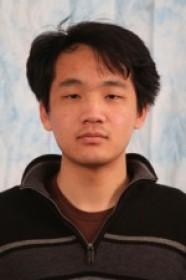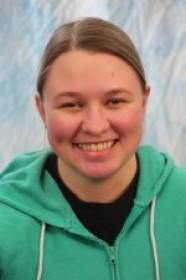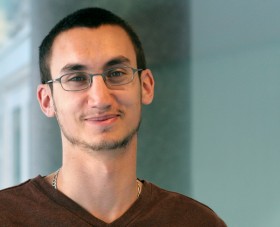In-Field Parameter Selection for Perception Context Adaptation
Event Location: NSH 1305Abstract: Perception and state estimation are critical robot competencies that remain difficult to harden and generalize. This is due in part to the incredible complexity of modern perception systems which are commonly comprised of dozens of components with hundreds of parameters overall. Selecting a configuration of parameters relies on a human's understanding [...]
Vision-Enhanced Lidar Odometry and Mapping
Event Location: GHC 2109Bio: Daniel Lu is an MS student at the Robotics Institute at Carnegie Mellon University advised by Prof. George Kantor. Daniel received his Bachelor's of Applied Science in Engineering Physics from the University of British Columbia in 2014. His research currently focuses on perception and pose estimation using a combination of cameras [...]
Direct Pose Estimation and Refinement
Event Location: NSH 1305Abstract: We study a fundamental question in pose estimation from vision-only video data: should the pose of a camera be determined from fixed and known correspondences? Or should correspondences be simultaneously estimated alongside the pose? Determining pose from fixed correspondences is known as feature-based, where well-established tools from projective geometry are utilized [...]
Safe, Efficient, and Robust Predictive Control of Constrained Nonlinear Systems
Event Location: NSH 1305Abstract: As autonomous systems are deployed in increasingly complex and uncertain environments, safe, accurate, and robust feedback control techniques are required to ensure reliable operation. Accurate trajectory tracking is essential to complete a variety of tasks, but this may be difficult if the system’s dynamics change online, e.g., due to environmental effects [...]
The Optical Coherence Tomography Microsurgical Augmented Reality System (OCT-MARS): a novel device for microsurgeries
Event Location: NSH 3305Abstract: We describe the development and testing of the Optical Coherence Tomography Microsurgical Augmented Reality System (OCT-MARS). This system allows surgeons to view real-time medical image data as an in-situ overlay within the surgical field. There are a number of clinical applications for which real time, in situ visualization of otherwise transparent [...]
Expressive Motion for Low Degree-of-Freedom Robots
Event Location: GHC 4405Abstract: As social and collaborative robots move into everyday life, the need for algorithms enabling their acceptance becomes critical. People parse non-verbal communications intuitively, even from machines that do not look like people, thus, expressive motion is a natural and efficient way to communicate with people. This work presents a computational Expressive [...]
Understanding Social and Physical Interactions from First Person Cameras
Event Location: Newell Simon Hall 1507Bio: Hyun Soo Park is an Assistant Professor at the Department of Computer Science and Engineering, the University of Minnesota. He is interested in understanding human visual sensorimotor behaviors from first person cameras. Prior to the UMN, he was a Postdoctoral Fellow working with Jianbo Shi at University of Pennsylvania. [...]
Instrumented and Connected: Designing Next-Generation Learning Experiences
Event Location: Newell Simon Hall 1507Bio: Tovi Grossman is a Distinguished Research Scientist at Autodesk Research, located in downtown Toronto. Dr. Grossman’s research is in HCI, focusing on input and interaction with new technologies. In particular, he has been exploring how emerging technologies, such as wearables, the Internet of Things, and gamification can be leveraged [...]
Algorithms, Implementation, and Studies on Eating with a Shared Control Robot Arm
Event Location: NSH 1305Abstract: People with upper extremity disabilities are gaining increased independence through the use of assisted devices such as wheelchair-mounted robotic arms. However, the increased capability and dexterity of these robotic arms also makes them challenging to control through accessible interfaces like joysticks, sip-and-puff, and buttons that are lower-dimensional than the control space [...]








